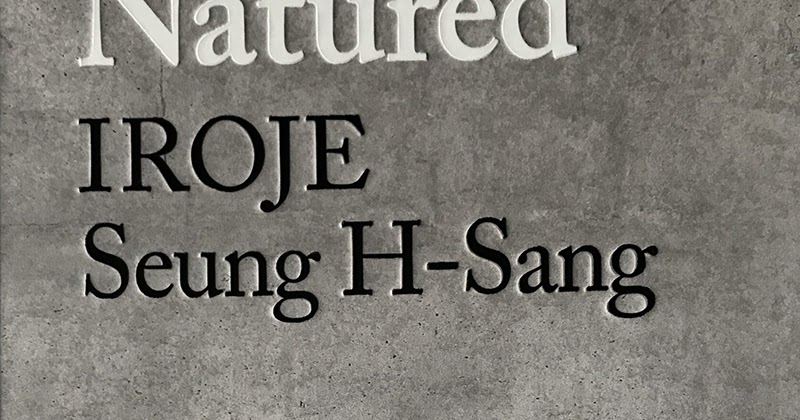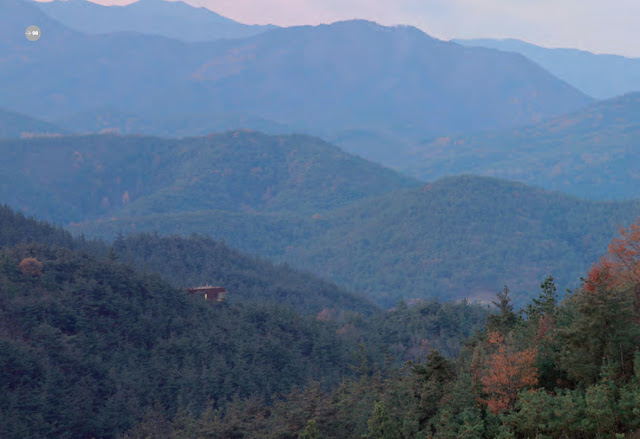Natured
Natured – IROJE, Seung H-SangSeung H-SangActar, January 2020Hardcover | 7-1/2 x 10-1/4 inches | 472 pages | English | ISBN: 978-1948765497 | $49.95Publisher's Description:This publication wants to transmit the constant values of the Seung H-Sang’s architecture, which has been routed on principles and ideals driven by sensuous and essences of raw materials, echoing the extemporal features of the culture where buildings are placed, discovering the prettiness of scarcity of resources. IROJE’s buildings, landscapes and urban proposals have been always looking for the equilibrium between endurance of the past essence of each place and the freshness of the new life experiences generated by the architecture. The book proposes to compile the best architectural IROJE’s works employing the magnificence of black and white pictures, creative sketches, and elementary plans and drawings to illustrate the permanent values of Seung H-Sang. dDAB Commentary:Korean architect Seung H-Sang established IROJE in 1989 and in the thirty years since has created an impressive portfolio of buildings, most of them in South Korea. Ashamedly, before cracking open Natured I was only familiar with one: The Clubhouse at the Commune by The Great Wall. Completed in 2002, the larger Great Wall project consisted of a dozen buildings by architects from China (Gary Chang, Cui Kai, Antonio Ochoa, Rocco Yim, Yung Ho Chang), Japan (Shigeru Ban, Kengo Kuma, Nobuaki Furuya), Singapore (Kay Ngee Tan), South Korea (Seung H-Sang), Taiwan (Chien Hsueh-Yi), and Thailand (Kanika R'kul); The Clubhouse was the building by the only South Korean architect but also the largest building in The Commune. It should have brought IROJE and H-Sang wider recognition, but if my ignorance is any indication (and I hope it's not), that's not the case.My lack of familiarity with IROJE's work before and after The Clubhouse meant that flipping through Natured was page after page of pleasing surprises. Let me qualify that: The first 70 pages revealed one great project after another. This happens since Natured is structured in three parts. It starts with those 70 pages of color aerials across two-page spreads (first photo below), each one keyed to the 35 projects presented in the mid-section of the book. The drawings of each project come third, at the back of the book, a position that is increasingly common in architectural monographs these days. Inserted between the first and second parts is an essay by Hyungmin Pai, who focuses on three IROJE projects: Pajubookcity, the burial ground of Roh Moo-hyun, and Sayuwon. By selecting these projects, Pai actually discusses many more buildings, as Pajubookcity, "an industrial cluster for the publishing sector," is comprised of multiple buildings designed by H-Sang, as is Sayuwon, a private arboretum with a handful of his pavilions. The latter is particularly rich, given how each building is beautifully integrated into the mountainous landscape, but every H-Sang project collected here has its own beauty. My only quibble with the book is that the buildings are exclusively presented in b/w photos in the middle section. I would have loved to see them with more color than the preceding aerials; for that I'll have to explore IROJE's website. Spreads:Author Bio:Born in 1952, Seung H-Sang graduated from Seoul National University and studied at Technische Universitaet in Wien. Worked for Kim Swoo Geun from 1974 to 1989 and established his office "IROJE architects & planners' in 1989. Purchase Links:(Note: Books bought via these links send a few cents to this blog, keeping it afloat.) Email Subscriptions:Subscribe to A Daily Dose of Architecture Books by Email

Seung H-Sang
Actar, January 2020

Hardcover | 7-1/2 x 10-1/4 inches | 472 pages | English | ISBN: 978-1948765497 | $49.95
Publisher's Description:
This publication wants to transmit the constant values of the Seung H-Sang’s architecture, which has been routed on principles and ideals driven by sensuous and essences of raw materials, echoing the extemporal features of the culture where buildings are placed, discovering the prettiness of scarcity of resources. IROJE’s buildings, landscapes and urban proposals have been always looking for the equilibrium between endurance of the past essence of each place and the freshness of the new life experiences generated by the architecture. The book proposes to compile the best architectural IROJE’s works employing the magnificence of black and white pictures, creative sketches, and elementary plans and drawings to illustrate the permanent values of Seung H-Sang.dDAB Commentary:
Korean architect Seung H-Sang established IROJE in 1989 and in the thirty years since has created an impressive portfolio of buildings, most of them in South Korea. Ashamedly, before cracking open Natured I was only familiar with one: The Clubhouse at the Commune by The Great Wall. Completed in 2002, the larger Great Wall project consisted of a dozen buildings by architects from China (Gary Chang, Cui Kai, Antonio Ochoa, Rocco Yim, Yung Ho Chang), Japan (Shigeru Ban, Kengo Kuma, Nobuaki Furuya), Singapore (Kay Ngee Tan), South Korea (Seung H-Sang), Taiwan (Chien Hsueh-Yi), and Thailand (Kanika R'kul); The Clubhouse was the building by the only South Korean architect but also the largest building in The Commune. It should have brought IROJE and H-Sang wider recognition, but if my ignorance is any indication (and I hope it's not), that's not the case.Spreads:
My lack of familiarity with IROJE's work before and after The Clubhouse meant that flipping through Natured was page after page of pleasing surprises. Let me qualify that: The first 70 pages revealed one great project after another. This happens since Natured is structured in three parts. It starts with those 70 pages of color aerials across two-page spreads (first photo below), each one keyed to the 35 projects presented in the mid-section of the book. The drawings of each project come third, at the back of the book, a position that is increasingly common in architectural monographs these days.
Inserted between the first and second parts is an essay by Hyungmin Pai, who focuses on three IROJE projects: Pajubookcity, the burial ground of Roh Moo-hyun, and Sayuwon. By selecting these projects, Pai actually discusses many more buildings, as Pajubookcity, "an industrial cluster for the publishing sector," is comprised of multiple buildings designed by H-Sang, as is Sayuwon, a private arboretum with a handful of his pavilions. The latter is particularly rich, given how each building is beautifully integrated into the mountainous landscape, but every H-Sang project collected here has its own beauty. My only quibble with the book is that the buildings are exclusively presented in b/w photos in the middle section. I would have loved to see them with more color than the preceding aerials; for that I'll have to explore IROJE's website.




Author Bio:
Born in 1952, Seung H-Sang graduated from Seoul National University and studied at Technische Universitaet in Wien. Worked for Kim Swoo Geun from 1974 to 1989 and established his office "IROJE architects & planners' in 1989.Purchase Links:
(Note: Books bought via these links send a few cents to this blog, keeping it afloat.)




Email Subscriptions:
Subscribe to A Daily Dose of Architecture Books by Email
